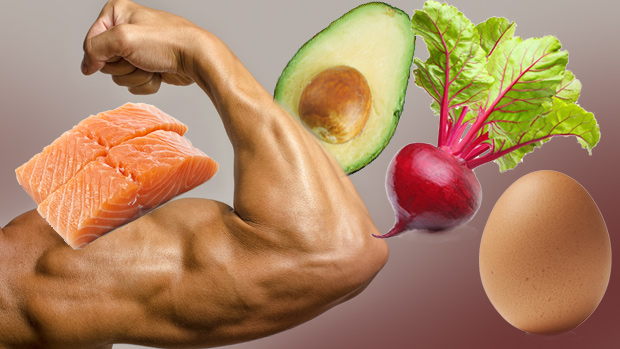Let this list be your reminder of all the delicious foods that'll help your body composition. If you're struggling to eat healthier and can't think of what to put on your grocery list, consider this a starting point.
Here are some of the most widely accessible foods that amplify the anabolic capacities of your hormones in a simple ABC format:
Believe it or not, it's actually a fruit. And it's a low glycemic one at that. We love it for the "good" fat, but it's also full of fiber and has several vitamins and minerals that help regulate everything from your metabolism to your immune response.
For maximum benefits, eat one avocado at least a few days per week. Blend it into your shakes, add slices to meals, or create a healthy chocolate-avocado pudding dessert. Here's one version to experiment with:
- 2 tablespoons cocoa powder
- 1 medium avocado
- 1-2 tablespoon raw honey
- 1-2 teaspoon cayenne pepper
- Directions: Mix everything together with a spoon or blender.
With a relatively low fructose sugar composition, you can get away with eating this antioxidant powerhouse alongside pretty much any meal or snack without any detrimental effects to your body composition.
Whether you're having a higher-fat meal, a lower-fat meal, or you're a competitor practicing an advanced carb-loading strategy, the glucose and polyphenol content in berries supports insulin sensitivity more than other common fruits.
Any frozen or fresh organic variety will do. Add them to your oats, pancakes, ice cream, yogurt, and protein shakes. For best results, include one or two cups of mixed berry varieties a few days per week with your meals.
This veggie is extremely affordable and full of vitamin-C. The spectrum of antioxidants in cabbage – including indole-3-carbonile, glutamine content, vitamin K, and anthocyanins in the red/purple varieties – support healthy aging for your skin and hair, immunity, strong bones, and even protection against ulcers and neurodegenerative diseases.
For optimal results, rotate between green, savoy, napa, and red/purple varieties throughout the year for use in dishes like stir-fries, soups, kimchi, and as a substitute for lettuce in tacos and salads.
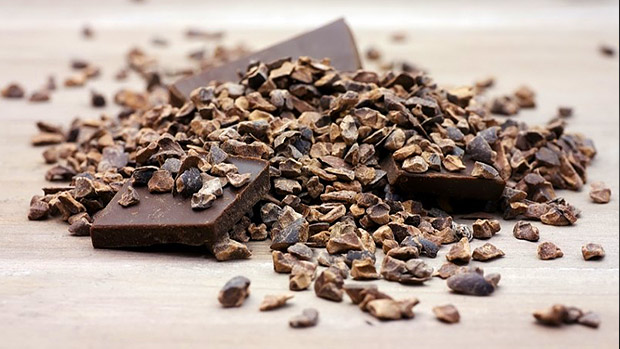
Too bad chocolate's only considered a dessert or cheat food. It's actually got some healthy characteristics, and could even be included in a weekly menu. With similar fiber content per serving as conventional fruits (apples, bananas, oranges) and an antioxidant profile like nuts and coffee/tea, chocolate is a considerable heart and brain health-optimizing tool when enjoyed in moderation.
For the most health benefits go darker. Consider chocolate with 75-85% cocoa or raw cacao powder/nibs once per week. Bonus: It may help keep cravings for other junk in check. Just be careful about eating chocolate too close to bedtime, as the naturally-occurring caffeine and theobromine content may keep you up.
In many ways, eggs are the perfect protein source. They contain an abundance of nutrients that support everything from cognitive health to muscle preservation. They're low in calories but help you feel full. They contain cholesterol but don't impact your LDL levels. They contain five grams of the most anabolic amino acid, L-leucine, but also have a good ratio of all other essential amino acids.
Also, eggs are premeasured so you don't have to guess at the serving size. While the protein content in chicken, seafood, and red meat is always variable, any gym rat knows that one egg has about six grams of protein, making it easy to stack with other animal/vegetarian-based sources without overdoing it.
For best results, eat a dozen eggs, prepared any way you like, spread out over the week.
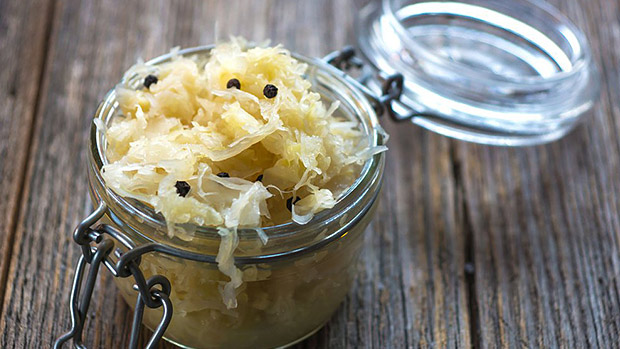
When most people think of fermented foods, dairy products come to mind since they're rich in probiotics. While things like yogurt, kefir, and cottage cheese are great, don't forget the digestive healing powers of other fermented foods like kimchi, sauerkraut, pickled beets, and kombucha.
The sugars/carbohydrate content in these foods are naturally preserved then transformed into gut-restoring acids and bacteria, which further boost immunity and regulate your weight at the cellular level.
Work up to two servings a day between your regular meals or 30-60 minutes prior. This will contribute to greater nutrient assimilation of your meals, which means those calories are more likely to be distributed into muscle cells, rather than fat cells.
Not to be confused with decaffeinated varieties, Camellia Sinensis leaves are one of the most well-researched for their extensive health benefits.
These health benefits are mostly associated with the antioxidant EGCG, which has been shown to improve hormone sensitivity under extreme shifts in caloric intake, help you adapt to stress, and protect against oxidative damage.
Drinking green tea is a safe and effective strategy for building muscle, reducing body fat, and maintaining a healthy weight. For best results, drink up to four cups per day, brewed in hot water only, and rotate between several varieties throughout the year (infused with natural/exotic flavors as matcha, mint, turmeric, ginger, honey, lemon, peach, cocoa, coconut, honey, etc.)
Topping the list of natural sweeteners with its antioxidant content, raw honey has been used for years as a natural anti-aging energy source, hormonal stimulant and sexual rejuvenator, immunity catalyst, and anti-depressant.
A serving of most raw honey varieties averages 20 amino acids and vitamins and minerals per one tablespoon serving providing 60 calories of energy. Since this energy is sugar/carbohydrate based, honey is an excellent sweetener substitute in tons of baking recipes, shakes, and topping on other treats.
Use one tablespoon daily for at least a few days per week for maximum benefits. It might also reduce cravings for processed crap.
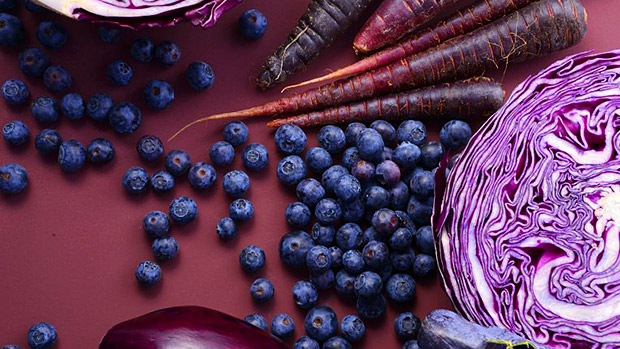
One thing that everyone struggling to optimize body composition has in common is their lack of vegetable consumption. More specifically, their deficiency of quercetin-containing foods, such as berries, red onions, red or purple cabbage, beets, eggplant, radishes, and grapes. These bright foods fight love handles caused by insulin resistance, junk in the trunk exacerbated by high cortisol, and sacrificial joint integrity.
While eating the above mentioned foods is one way to tackle such hormonal issues within the body, another excellent way to control your caloric surplus/deficit is with Indigo-3G®.
Along with cayenne (red) pepper, the majority of health benefits from consuming jalapenos come from the anti-inflammatory properties of capsaicin, a naturally occurring spicy compound.
Turning up the heat with your meals is a great way to increase the thermic effect of food (the energy required for the digestion process), provide pain relief to connective tissue via COX-2 enzyme inhibition, and modulate markers of cardiovascular health such as cholesterol and blood pressure. All of these actions promote an anabolic response from your muscle cells.
For best results, cook jalapenos into one-dish meals like chili, omelets, and crab cakes, or use as a topper for raw salads and Mexican-style entrees. Preferably not right before or after a workout, though. A little goes a long way.

Add some Middle-Eastern flare to your weekly menu to encourage a healthy adaptation response from your training. This one-dish combo of muscle-building animal source protein, disease-fighting vegetables, and glycogen-restoring rice is just as much a meathead's weekly meal prep strategy as it is a healthier option for fat asses and busy professionals who eat out all the time.
While the simplicity of the one-dish meal concept is non-negotiable for maintaining a weight you're happiest and healthiest at, it's also a good idea to rotate your protein, vegetable, and starch sources throughout the year to minimize nutrient deficiencies.
While they're not very nutrient dense themselves, they provide some unique digestive and immunity-enhancing benefits as a food/beverage embellisher.
To optimize the benefits of the citric acid, vitamin C, and minerals within the pulp and juice, simply squeeze over any whole food dish, or infuse your beverages throughout the day. The pectin and electrolytes will further hydrate the body at the cellular level.
Mushrooms have an extensive history of adaptogenic and medicinal properties. At the macronutrient level, they're low in calories and contain insoluble fiber to regulate digestion.
At the micronutrient level, however, a one-cup serving will give you a good hit of vitamins B and D, along with a number of minerals such as copper, selenium, and potassium. Also present is a wonderful bacterial synergy between betaglucans and pre/probiotic enzymes to support immune response, cardiovascular, and cognitive adaptations.
The most commonly consumed varieties include Portobello or cremini, button, shiitake, porcini, and chanterelle, all of which are typically cooked into soups, casseroles, omelets, Italian dishes, and sauteed with other vegetables or mixed into raw salads. You can also find their extracted nutrients in various super food supplements and teas.
One of the easiest ways to meet your energy needs without feeling like you're starving is to add nuts into your snacks and meals. The fat content is extremely beneficial for your brain and heart, with plant source omega-3's (i.e. DHA) and an abundance of vitamins, minerals, and amino acids that eliminate cravings for processed crap.
Eat a couple handfuls of mixed nuts throughout the day, alongside a portion of quality protein with vegetables or fruit to regulate the glycemic response of your food and provide you with a sense of satiety. Add natural nut butters to your recipes, or add more texture and flavor of your meals by sprinkling chopped nuts on top.
You might also want to rotate between lower fat varieties (cashews, pistachios, almonds) and higher fat varieties (walnuts, pecans, macadamias), depending on the macronutrient content of the rest of your meals.
When you think of healthy olive oil, think extra-virgin. And when you think of Omega-3's think of fats from fish and krill oils.
There would be far more successful body transformations if people paid closer attention to the quality of fat in their diets. This is where energy balance can be misleading. Refined fats like sunflower, soybean, canola, safflower, and peanut oil all show up in the profile of fast-food meals, processed food, and even entrees from restaurants because they're cheap.
But these same fat sources are also considered endocrine disruptors, since they contain omega-6 fatty acids that are associated with inflammatory diseases. What this means for you is, unless you're a bodybuilder or figure competitor, you won't need to count calories as much if you replace the vegetable oils above with extra-virgin olive oil and marine source omega-3s.
The essential fatty acids in olive oil and omega-3 fatty acids from marine sources have been associated with lower cortisol in the bloodstream, yielding higher testosterone levels and less joint fatigue. Simply drizzle some EVOO on top of food cooked at low to medium heat, or use 1-2 tablespoons on top of raw foods, every day.
As for obtaining your omega-3s, use high potency supplements like Flameout® to combat excessive body fat, promote healthier skin, optimize neurotransmitters for better performance at work and in the gym, and speed up joint recovery.
Normally reserved for fall season treats, pumpkin is actually one of the healthiest foods you could eat year-round. The flesh is loaded with beta-carotene, which becomes synthesized as vitamin A within the bloodstream.
Vitamin A plays a key role in regulating the health and function of pretty much every system within the body. Of particular interest is your vision, immune system, and connective tissue.
Since it's a fat soluble vitamin, most nutrition experts agree that it's a good idea to include some fat with any beta carotene energy sources (pumpkin, sweet potatoes, carrots, pineapple, winter squash). A handful of raw hazelnuts or pumpkin seeds, or a tablespoon of virgin coconut oil baked into your holiday goods should do the trick to prevent vitamin A deficiencies.
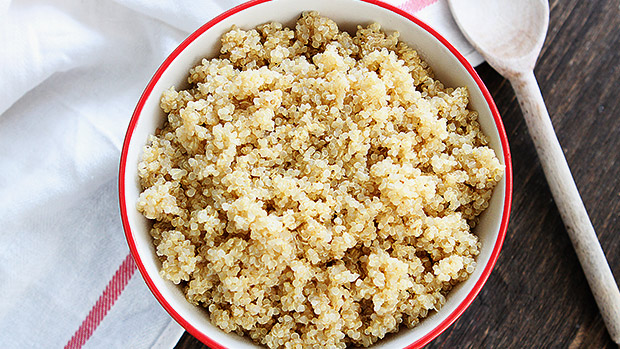
This starchy seed is considered a super food for some, and with good reason. Unlike most other vegan and vegetarian foods, quinoa provides all the essential amino acids, making it a higher quality protein substitute, especially for people who are afraid to eat more carbs.
With roughly 40 grams of carbs per one cup serving of cooked quinoa, there are 6 grams of fiber to help you manage the glycemic response of your meals. It gets bonus points for its magnesium, zinc, and iron content – minerals we're commonly deficient in.
To optimize the anabolic capacity of quinoa, you can combine it with any other food on this list. But some specific examples include quinoa stir-fries, stuffed mushrooms or peppers, salads, soups, and my favorite, enjoy it as a hot breakfast cereal substitute:
- 1-2 cups cooked quinoa
- 1-2 scoops protein powder powder
- 1/2 to 1 cup unsweetened almond or coconut milk
- 1-2 tablespoons each of raw honey, cinnamon, and coconut oil
It's one of the top anti-inflammatory herbs on the planet. Rosemary is extremely versatile and aromatic. With naturally occurring anabolic compounds such as rosmarinic acid, ursolic acid, and various essential oils, you're looking at a remarkable series of benefits.
From memory to muscle mass to immunity, this is one herb that you want to use on a daily basis. Season and grill some lamb or steak with it, toss it on top of roasted potatoes, infuse your extra-virgin olive oil with it, or find a trusted essential oil source and apply topically or make your Epsom salt baths even more therapeutic with a few drops.
Everyone turns to salmon at least once in their life for some heart and brain healthy omega-3 fats. But another reason you need to eat salmon is because of the naturally-occurring astaxanthin antioxidant that's associated with improved skin, eye, heart, and strength training adaptations.
When consumed with plenty of vegetables, the synergistic qualities of astaxanthin from salmon allow for the water and fat soluble parts of the cell to address multiple free radicals simultaneously. This means greater protection against several forms of disease than you'd get by ingesting other antioxidants alone.

This is where curcumin gets its extraordinary healing powers from. One of the more heavily researched in the industry, golden turmeric extracts have demonstrated significant benefits.
Like what? Changes in blood chemistry that elicit strong hormonal adaptations for starters. These benefits include faster joint recovery from intense exercise, lower cortisol levels (which mildly boost testosterone levels), prevention against oxidative damage, prevention against cholesterol and blood pressure spikes, and even neural activation and gut health.
It'd be extremely difficult to achieve a therapeutic dosage from this spice in curry-based recipes alone. Consult with your health provider about mixing and matching curcumin products with any pre-existing medications before taking.
Full of live lactase enzymes and probiotics, raw milk has some great benefits that are often left unexplored due to poor sanitation laws surrounding the TB epidemic.
Your best bet is to seek out a local farm in your state that produces milk from pastured cows. The runner-up option would be to look for whole milk dairy products from grass-fed cows (cottage cheese, kefir, yogurt).
When consuming a couple servings of raw milk products once a day, at least a few days per week, you may notice less illness throughout the year. This is due to the beneficial bacteria that help you absorb more antioxidants and less of the anti-nutrients that causes food sensitivities and gut issues.
Packed with antioxidants and plant polyphenols at the micro level, non-starchy vegetables are the carb source that won't make you store extra fat... even if you load up on extra servings.
Go for the cruciferous family (broccoli, cauliflower, Brussels sprouts, cabbage) when dieting to keep you full and satisfied. Roast or saute some bell peppers, red onions, mushrooms, green/yellow squash, and asparagus.
Enjoyed mostly as a green paste or mixed powder with everyday foods in Japanese cuisine, wasabi is a member of the same family as cabbage, horseradish, and mustard. The benefits stem from its cancer-fighting properties and regulation of oxidative damage within the bloodstream.
If you prefer an extra kick on the heat spectrum, it's a wonderful substitute for anything with red pepper – including hot sauce and ground seasonings. It also means less connective tissue inflammation. If you can't source real wasabi (most of the American stuff is just horseradish and green food coloring), you can still get the benefits year-round with Superfood which contains the glucosinolate extracts, which hold the true power of wasabi.
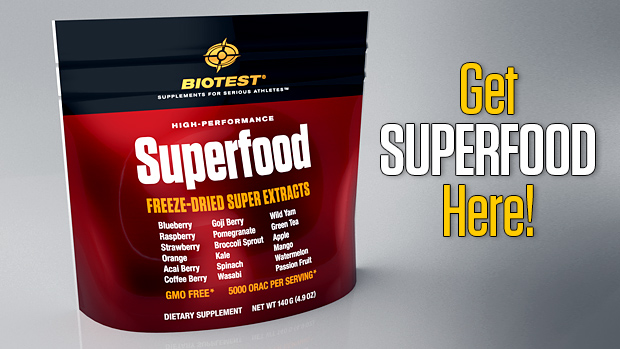
Avoid them! These are an exception to the list of anabolic foods. Xenoestrogens imitate hormones that promote fat-hoarding estrogen, and they're often a result of heating plastic.
Some common examples include plastic containers left under sunlight in the car, and microwaveable bags of food found in the frozen aisle. So make sure to keep beverages in BPA-free or stainless steel bottles, and heat your food on plates or in Pyrex containers instead of Tupperware or plastic bags.
Mostly taken in supplement form during a fasted state along with a bit of caffeine, yohimbine has been found to support libido health by alleviating symptoms of erectile dysfunction in men.
These aphrodisiac properties can be helpful for athletes in a caloric deficit to prevent excessive hormonal shifts. As with other stimulants, use common sense and ease in mindfully. In other words, follow the label instructions.
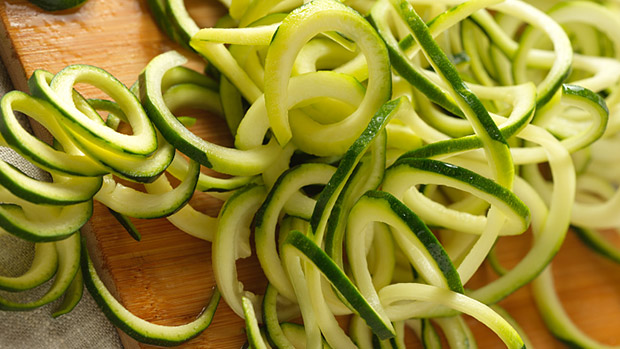
We've already covered vegetables as a whole, but this last letter is dedicated to vegetables that can also replace starchy side dishes.
For example, zucchini noodles, cauliflower rice, seaweed/kelp noodles, beet noodles, spaghetti squash noodles, and sweet potato noodles all fit in nicely with traditional dishes involving pasta or rice. Look for a spiralizer and get creative. Or find these substitutes in the frozen aisle already sliced up.

